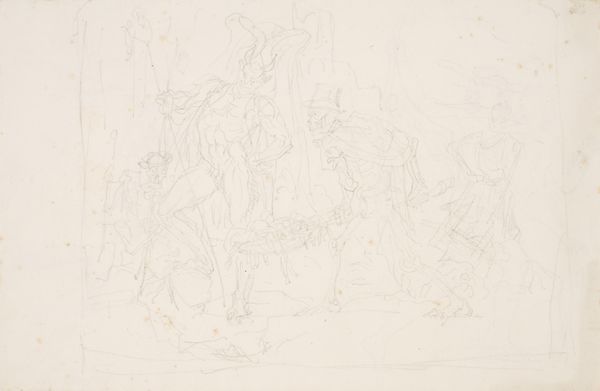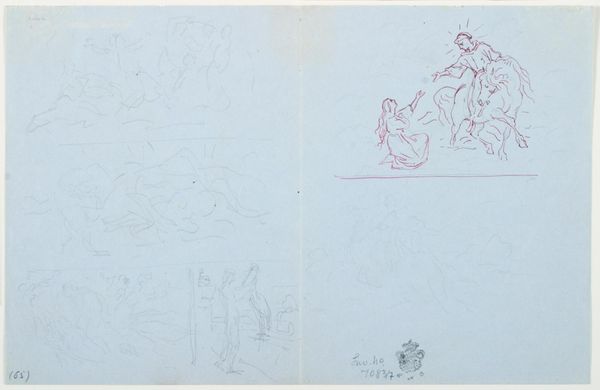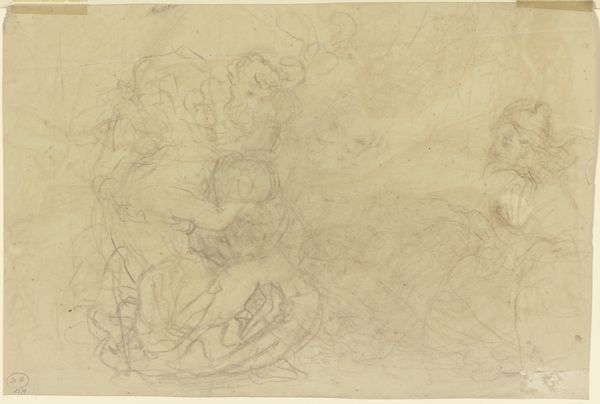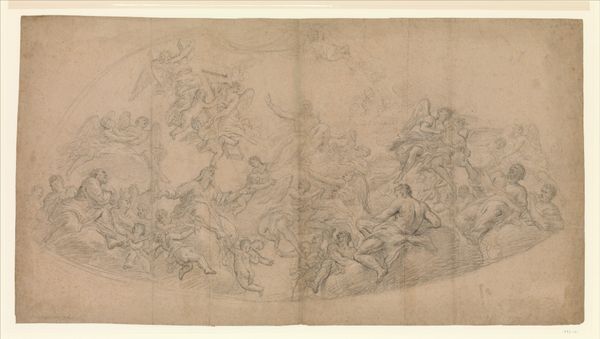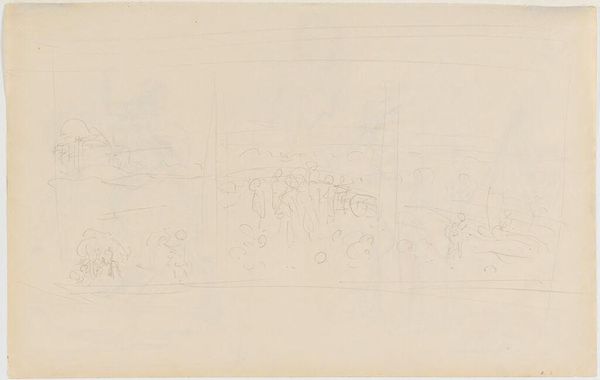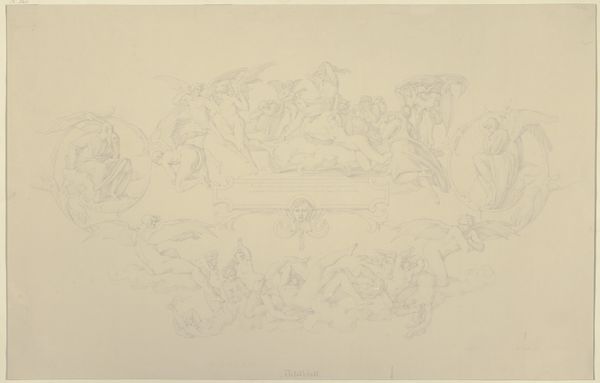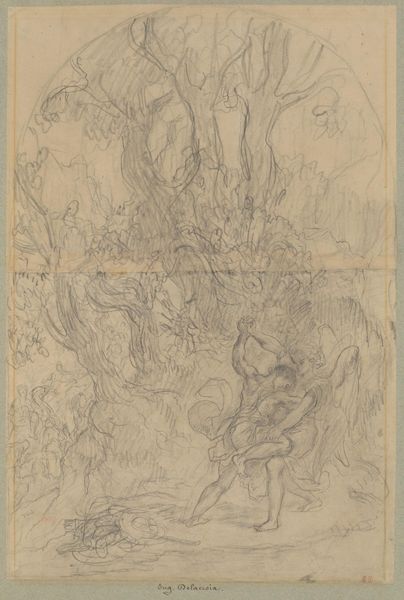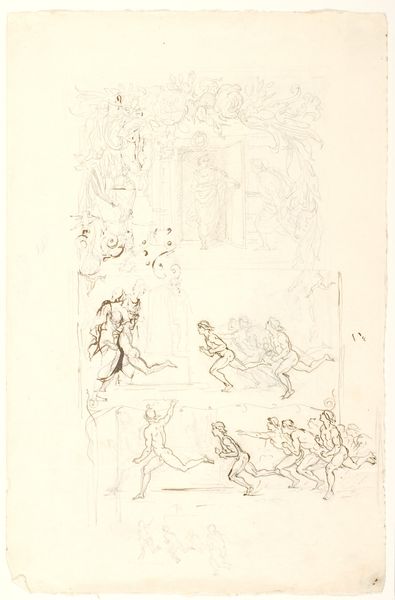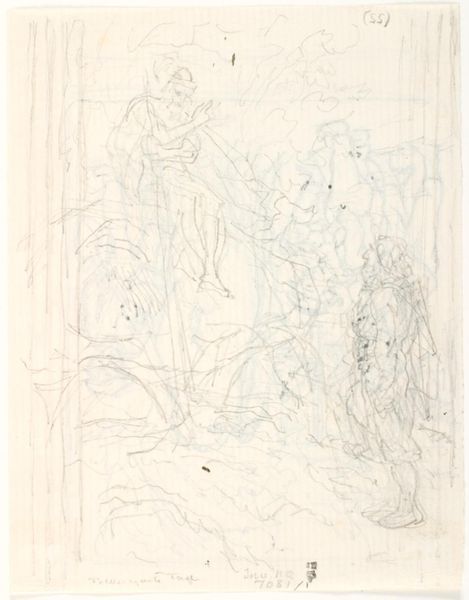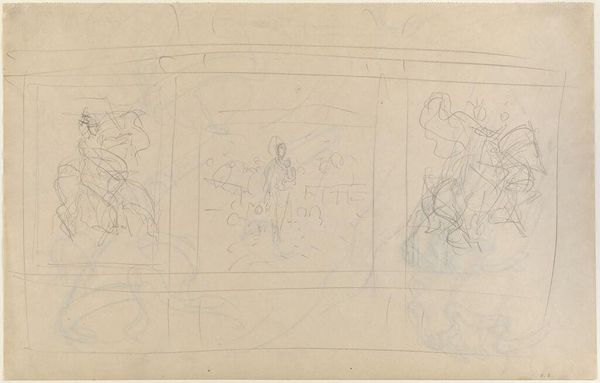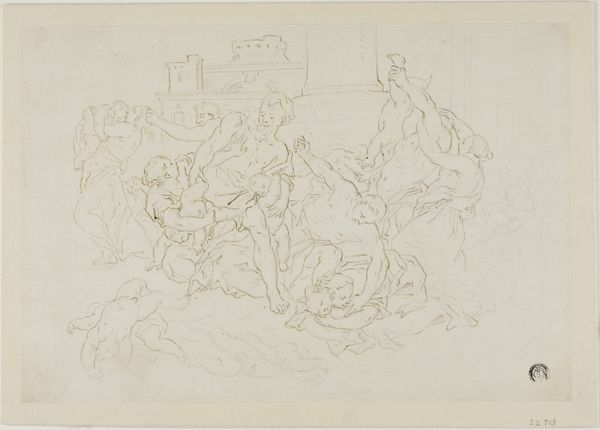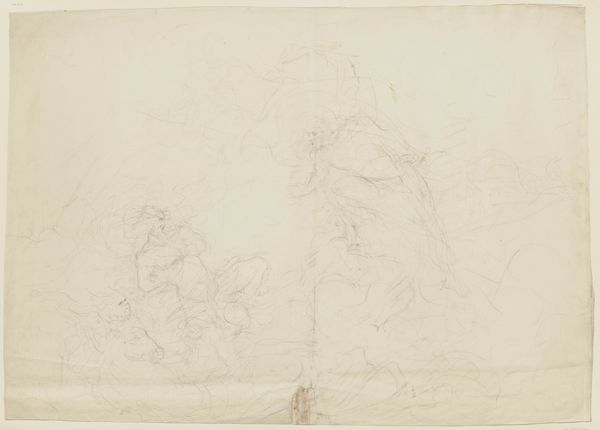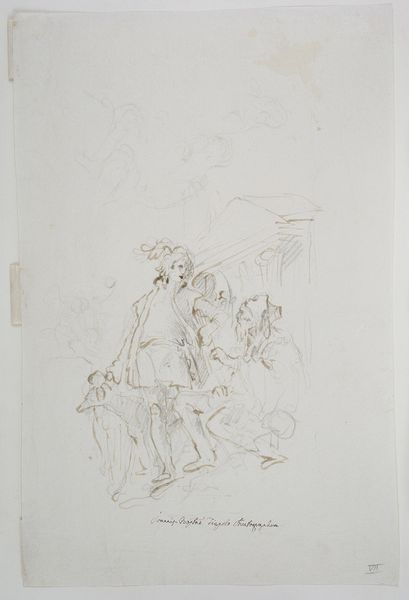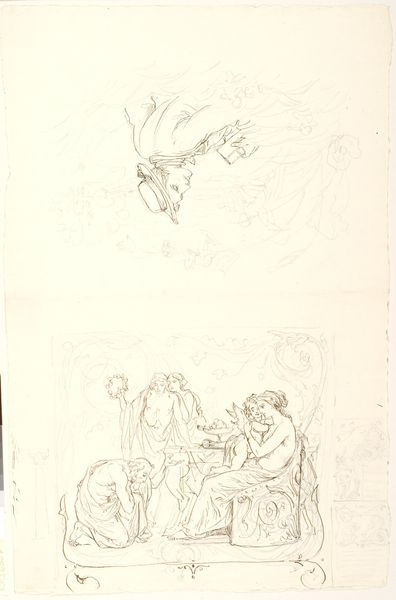
drawing, dry-media, pencil
#
drawing
#
pencil sketch
#
etching
#
figuration
#
dry-media
#
pencil
#
realism
Dimensions: 307 mm (height) x 197 mm (width) (bladmaal)
Curator: We're looking at "To figurrige udkast," or "Sketch with Figures," a drawing created around 1860 by Lorenz Frølich and held at the SMK, the National Gallery of Denmark. Editor: My initial impression is of a turbulent, dreamlike state. The overlapping figures and hazy lines almost vibrate with an unrestrained energy. Curator: Indeed. Frølich was deeply engaged with Norse mythology and history. These sketches are preparatory studies likely intended for larger narrative paintings or perhaps even illustrations. Consider the sociopolitical atmosphere of Denmark in the mid-19th century. There was a surge of national romanticism where artists explored their cultural past, particularly Norse sagas and folklore, as a way to define a distinct national identity amidst complex political changes. Editor: The way he builds up the forms with repetitive strokes and hatching creates a fascinating interplay of light and shadow, despite the lack of color. It draws the eye across the entire surface, almost as if he’s trying to capture the sheer volume of bodies and action. There's a certain elegance, though it is rather muted given the density of marks. Curator: Look at the position of the figures; they are in some kind of conflict. I would guess he may be alluding to some type of war conflict that reflects his nation and era. But it is only with Frølich's deeper work and analysis of how he renders a story that allows the artwork to make a narrative to which a viewer can resonate. Editor: Absolutely, the composition feels inherently unresolved, fragmented. Perhaps that incompleteness is intentional, serving to underscore the transient, ever-shifting nature of human experience, of collective memory, or of political strife. Curator: The use of pencil in the dry-media is important to reflect how we need to address art, or better said, how artists in his period needed to reflect art in relation to nation and political positionality. Frølich gives us a space where we must understand and analyze not just art but nation as one. Editor: What's so intriguing here is how Frølich manages to evoke so much energy and dynamism with such simple means. It reminds me of the power of suggestion in art. Sometimes, less truly is more. Curator: Absolutely, it shows how visual art becomes the platform of thought and, therefore, creates space to construct society in every directionality. Editor: I agree, I leave now considering the potential residing within the unrefined and raw artwork!
Comments
No comments
Be the first to comment and join the conversation on the ultimate creative platform.
